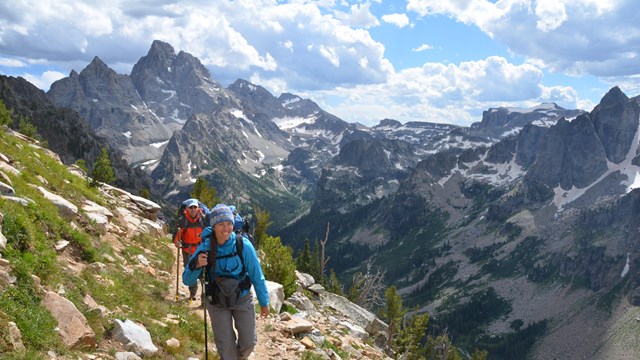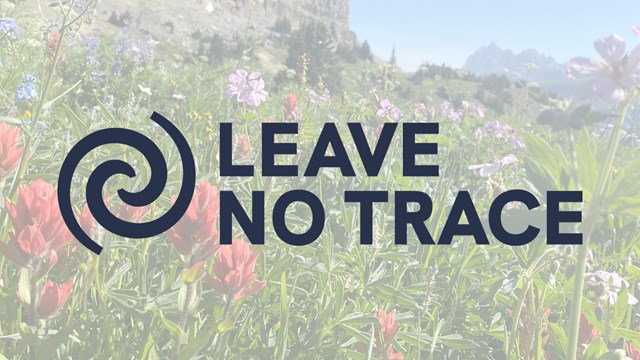
NPS Photo / J. Tobiason Navigating the trails of Grand Teton National Park demands not only an appreciation for the breathtaking scenery but also a commitment to protecting this special place. With every step, visitors become stewards of this pristine wilderness. Backpacking EssentialsPrepare for an unforgettable wilderness odyssey in Grand Teton National Park with these essential items that will ensure your backpacking journey is both safe and rewarding.
This is not an extensive list but only the essentials, be sure to gather all the gear you think you need. 
NPS Illustration Food StorageBackpackers are required to carry approved bear-resistant storage except where food storage boxes are provided. Hanging food inside park boundaries is strictly prohibited. Grand Teton National Park requires the use of Interagency Grizzly Bear Committee approved containers for food storage in the backcountry. Permit holders may check out a canister with their permit, free of charge. Backpackers are welcome to bring their own bear-resistant food container. For a list of all approved portable bear-resistant food containers please visit the IGBC website. Food Prepartation and StorageAll food, garbage, toiletries, and any odorous item that may attract a bear, must be stored in a bear-resistant food canister when not in immediate use—day and night.
Keeping Odors Down Around Camp
On some specific alpine routes where a climber is bivouacking on a high rocky ledge where bears cannot go, park-approved bear canisters may not be required (check with a ranger). Trail EtiquetteThe best thing you can do when hiking is to remember the “golden rule”: treat others the way you would want to be treated. Here are some main points of hiking etiquette:
Enjoy the peaceful quiet of nature to hear the sounds of birds, bugling of elk, pikas chirping, flowing water, and wind blowing through the leaves. Leave music devices behind, even wearing headphones is not recommended because your ability to be fully aware of your surroundings is compromised. Let other explorers of nature have a break from the sounds of modern city life. Leave it be. Picking wildflowers, leaving geocaches, and writing messages on rocks and trees is not allowed. Please refrain from “rock stacking” or building cairns as it mars the landscape and can confuse fellow hikers. Leave nature as is for all to enjoy. How to Handle Your PoopHuman waste in the backcountry will happen on every excursion.
Pack out toilet paper, sanitary napkins, and tampons in a airtight bag or container. A kit containing privacy baggies and toilet paper may be available at park stores. FishingSome higher backcountry lakes have a small fish population, but relying on fishing for a food source while hiking is not recommended. Valley floor lakes such as Jackson Lake and Leigh lake are known for their fishing. If you are intending to fish, a Wyoming State fishing license is required. Check out the Fishing page for details. 
Backcountry Camping
Plan your backcountry adventure. 
Leave No Trace
Minimize your impact and Leave No Trace of your visit to wilderness. 
Get Your Permit
Current pricing and tips for getting a permit 
Know Before You Go
Learn when the snow melts and what the trail will be like. 
Backcountry Zones and Sites
Map out your route and find a place to camp. |
Last updated: November 28, 2023
